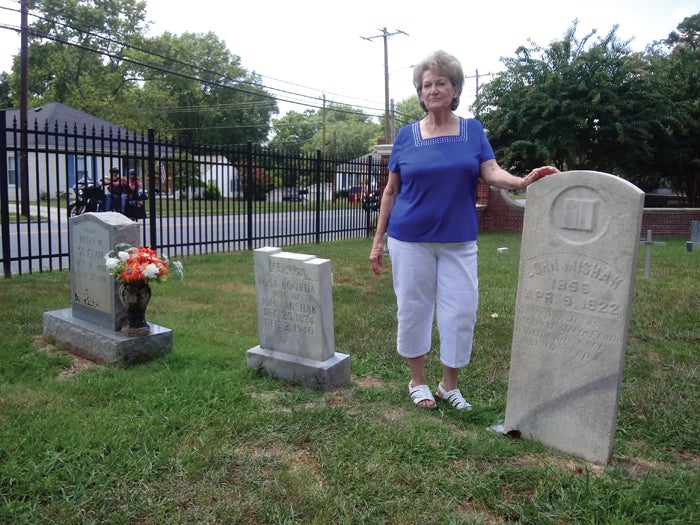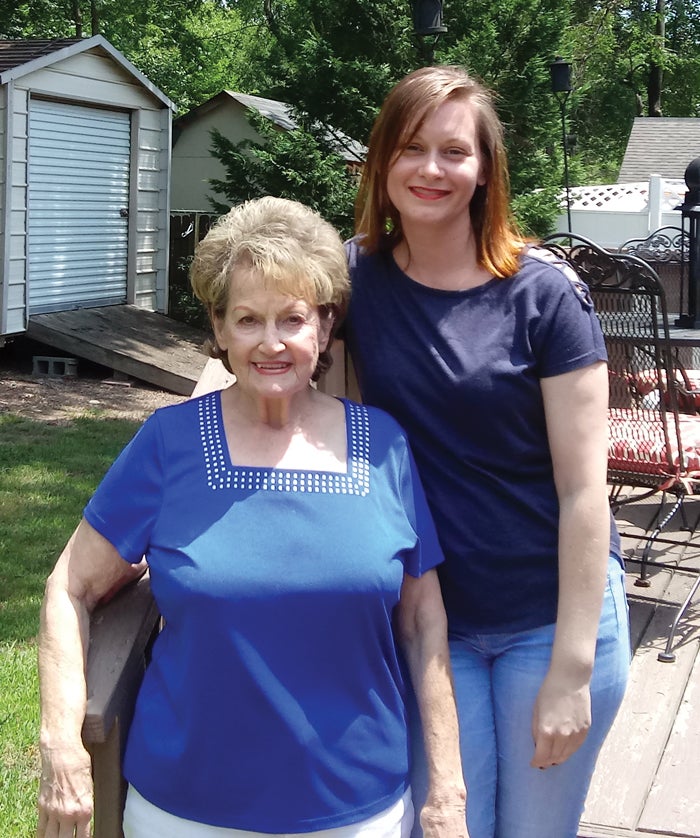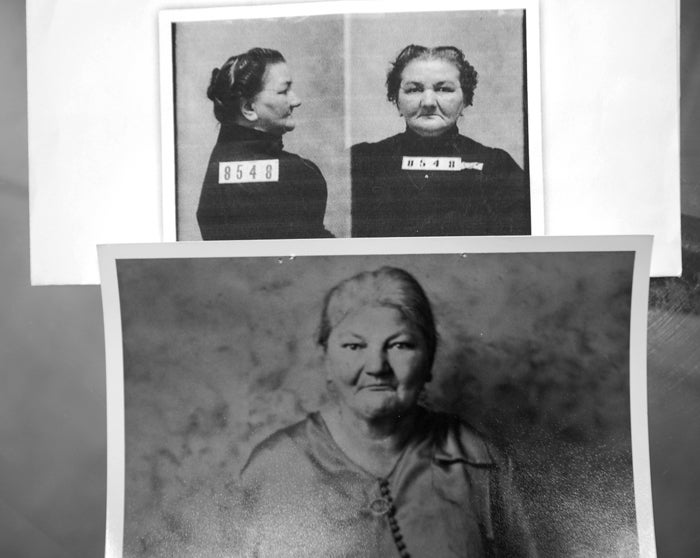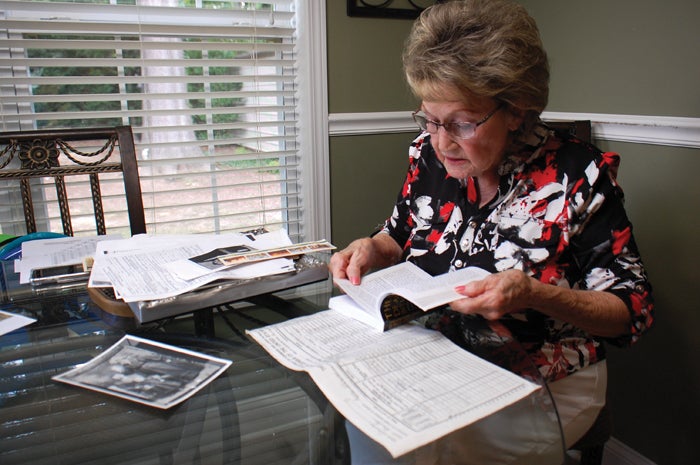Searching for Anna: A Kannapolis woman’s dive into family history finds a hidden secret
Published 12:00 am Sunday, August 11, 2019
KANNAPOLIS — For 40 years, Dean Rary had been looking for her great-grandmother.
When she finally found Anna Burda, Rary became immersed in a tale of immigration, murder, prison, a governor’s pardon, and family secrets.
The story began in Czechoslovakia — Bohemia, at the time — and passed through Ellis Island, took in homesteaders of Nebraska and Oklahoma, then came back across the country — from Iowa to Florida to North Carolina.
In the end, it connected sides of a family that hadn’t seen each other in 100 years.
“Even though it was a heartbreaking thing,” Rary says of what she discovered, “I feel like there’s some closure.”
• • •
When Dean Rary started her genealogical digging long ago, the information she had pretty much ended with her grandparents, John and Rosalia “Rosa” Mishak.
John and his brother, Frank, had immigrated from Bohemia to the United States as young men, working on the ship that brought them to America. Rosa came with her family, also from Bohemia.
Rosa’s family originally homesteaded in Saunders County, Nebraska, before moving to the Bohemian community of Prague, Oklahoma. Czech immigrants settled Prague after the opening of the Sac and Fox Reservation by a land run on Sept. 22, 1891.
Rosa and John met in Prague and married in 1896.
Around the turn of the century, the Mishaks left Oklahoma by covered wagon and relocated in Belle Plaine, Iowa, where John’s brother, Frank, already had relocated. John became a coach maker.
The 1910 census shows that John and Rosa Mishak were still in Iowa, but they soon moved to Florida, where they became sharecroppers. John eventually traveled to North Carolina looking for work because many of the textile mills were hiring folks such as him and their wives and children.
John ended up working for Cannon Mills before his death in 1922, when the Mishaks were living in a mill house on Chestnut Avenue. John and Rosa Mishak had five children, including Rary’s mother, the late Helen St. Clair.
Rary never knew her grandmother, a laundress who died in 1940 and is buried in Kannapolis City Cemetery alongside John. Rosa wound up living her final years in China Grove.
The Mishaks apparently never spoke of Rosa’s parents, so neither did her children.
“It was a quiet, quiet situation, evidently,” Rary says.
Still, she felt a connection to her grandmother Rosa, and she cherished a photograph she had of her late in life. The family also had a circa 1900 portrait of John and Rosa with son Frank. It would have been about the time they were leaving Oklahoma for Iowa.
“I always felt drawn in,” Rary says. “I always felt a bond with my grandmother, and I started trying to find out her family connections. In my bones, I knew my grandmother. I never met her, but I knew her.”
• • •
About 40 years ago, Rary started going to the Rowan Public Library after Sunday church services and spending the afternoon researching family histories, looking for clues to her great-grandparents on her mother’s side.
“I mean I delved into it,” she says. “I found very, very little.”
Things didn’t really start happening until Rary, with her granddaughter Sheryl Beneduce and niece Lena Eidson’s help on the computer, began using Ancestry.com. Lena especially became immersed in the search.
“I would not be as far as I am without her,” Rary says.
They soon came in contact with Oklahoma author Wayne Pounds, who was just finishing a chapter, he told Rary, on Rosa Mishak’s parents, Frank and Anna Burda. He wondered if Rary knew anything about what had happened to Anna Burda’s embroidery.
Pounds was including a story about Rosa’s parents in his book “The Lonesome Death of Billy Grayson and Other Killings in Early-Day Lincoln County.”
The book is described as “a collection of seven documented nonfiction narratives” about killings in that Oklahoma county, including one connected to Rary’s great-grandparents.
Pounds documents the story in Chapter 2. The table of contents gives this description for it: “Drawn Needle Work: An old Bohemian woman, sentenced to life for killing her husband and unable to understand English, sits in prison knitting. Without speaking the language of her captors, how can she get anyone to listen to her?”
“I could not get that lonely old woman off my mind,” Pounds told Rary in their telephone conversation.
An Amazon review of the book says, “It is about the lives of the rural poor as revealed through the background of murders with which they’ve been charged and convicted but which they’ve not necessarily committed.”
• • •
Anna Burda, Rosa’s mother, had been charged — and convicted — in the murder of her husband, Frank, in September 1897.
By what the family knows today, it was quite the railroad job. Anna Burda could not speak English. No defense was put up at her trial, no evidence was offered on her behalf. There was no jury. All the evidence against her was circumstantial, and the local judge gave the case little consideration.
An 1897 newspaper account in Chandler, Oklahoma, reported this at Anna’s arrest:
“Anna Burda was brought to Chandler the first of the week having been bound over by Justice Vlasak on the charge of murdering her husband. She is a Bohemian woman about 53 years old and lives in the Bohemian settlement in the southeast part of the county. Her husband was found dead in his house about two weeks ago, having been shot, and circumstantial evidence points to her as the guilty person.”
Rary says she learned from Pounds that the 4th District Court judge (Burford) in Anna’s case was trying to address a docket of 237 cases before him and he cleared that docket over 17 to 18 days.
It was swift, but sometimes misdirected, justice in the name of expediency, Rary says.
“They never really investigated her husband’s death,” she adds. “They were trying to get so many cases off the docket. She contended her husband committed suicide, but there was a lot of evidence, too, that John Hynek — her son-in-law — did it.”
After finding Anna guilty, the judge sentenced her to life in prison. Rary says she was the first woman convicted of murder in Oklahoma.
• • •
At first, Anna Burda spent her confinement in a Kansas state penitentiary crocheting and knitting things for her three daughters, while days, months and years passed without her being able to communicate with anyone — because of the language barrier.
Kate Barnard, a legendary activist in Oklahoma and the first commissioner of charities and corrections, became upset at the deplorable conditions Oklahoma Territory prisoners were under in Kansas.
Barnard successfully worked to transfer the Oklahoma prisoners from Kansas, and prison labor was used to build Oklahoma’s first state prison. It was there Anna befriended a guard who could speak the Czech language.
The guard became convinced of her innocence, and his wife took up Anna’s cause, eventually going to the governor — Oklahoma’s first governor, Charles N. Haskell — and asking for Anna to be pardoned.
Haskell granted Anna a pardon on Jan. 10, 1910, meaning she had spent nearly 12 years in prison. She went to live with her daughter Francisca (Frances) in Nebraska, but she died within two years, in 1912, though the family isn’t sure of the exact date.
She is thought to be buried in Knox County, Nebraska.
In an ironic twist, Anna spent her final years living with the son-in-law, John Hynek, who some people thought might have been her husband’s killer.
Hynek was said to be after some 80 acres the Burdas owned but was tied up in courts after Frank’s murder. Hynek possibly had hoped to eliminate the couple and inherit the property, Rary says.
Pounds told her Hynek even wrote the Oklahoma governor and asked him to send Anna back to prison because she was trying to poison him.
• • •
Why did John Mishak and his wife, Rosa, leave Oklahoma for Iowa?
Rary thinks her grandparents were trying to put the scandal of Rosa’s mother’s conviction behind them.
“To protect their children,” Rary says. “I really do believe that.”
After she learned the story of her great-grandparents, Rary says she went to the graves of John and Rosa at Kannapolis City Cemetery and cried.
“What heartbreak was brought to them,” she says.
Her search for Anna Burda has many side stories.
Rary has made a trip to Czechoslovakia, though she was not successful in learning more about her grandparents.
She tracked down the Iowa family connection many years ago. She first wrote to the “Dear Genie” genealogical column in the Cedar Rapids Gazette asking for information on the Mishak family there.
Rary’s married name was Campbell then, and somehow a response to her query reached then-Enochville Fire Chief Dallas Campbell (no relation). He connected her with the letter writer, Alma Kuta, who was Frank Mishak’s daughter and a second cousin of Rary.
In Iowa, the Mishak name had become “Mysak.”
For a time, Rary communicated with Kuta over the telephone and through letters, but she never met her personally before Kuta’s death.
The latest family connection came just two weeks ago when Lindsay Helm visited Rary from Avon, Indiana. Helm is a 38-year-old descendant of Anna Burda on Francisca’s branch of the family tree.
Remember, Francisca was Rosa Mishak’s sister and both were daughters of Anna Burda, who was Helm’s fourth-great-grandmother.
“She’s a sweetheart,” Rary says of Helm.
Helm had a photograph of Rosa that was identical to the one Rary possessed, but Helm had thought it was a picture of her great-great-great-grandmother Francisca.
While Rosa’s family had always assumed she never had any contact with her family after leaving Oklahoma, this proved that she had, Rary said.
The visit between Helm and Rary was joyous.
“We had such a wonderful time, and we hugged her like she belonged here,” Rary says.
Helm says it was a mini-family reunion.
• • •
Helm actually had learned of Anna Burda and her heart-aching story in 2015.
Deep into family research, Helm went to a genealogy center in Salt Lake City and over a weekend she discovered her connection to Anna Burda in Prague, Oklahoma, and the story of Anna’s conviction and incarceration.
Helm kept double-checking her research. The “Burda” name is a common one among Czechs.
“Everything kept coming back to her,” Helms says. “It was pretty unbelievable for me. I went through a range of emotions. I still get upset at times.”
Helm is originally from Omaha, Nebraska, and a strong Czech migration to Omaha is an important facet to that city’s history. Helm says she identifies most strongly with the Czech side of her family, makes Czech recipes on holidays and has flown to Czechoslovakia in the past to do genealogical research.
Helm connected with Rary through Rary’s niece, Lena Eidson, and they have been in contact with each other for about two years. A Facebook group for the family also has formed.
“It was an amazing trip,” Helm says of her visit to Kannapolis.
When it comes to her future family pursuits, Rary has a couple of things on her own bucket list. She would like to visit the Mysaks in Iowa and also attend the Bohemian Festival in Cedar Rapids, held annually in August.
She looks back in awe, thinking about the courage of her ancestors and the sacrifices they made traveling across the ocean, then often across their new country.
“God really looked after them,” Rary says. “God was always there for them. I always give him credit.”
Contact Mark Wineka at 704-797-4263 or mark.wineka@salisburypost.com.








